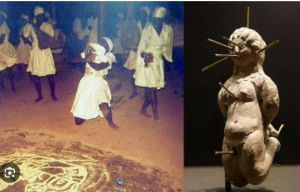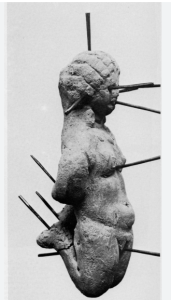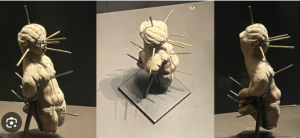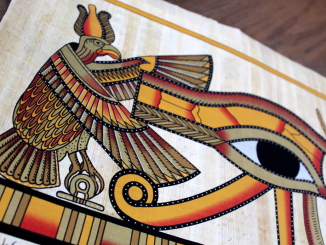Introduction
In the heart of ancient Greece, a discovery that whispers tales of mysticism and ancient rituals was made, bringing to light a practice that blurs the line between myth and history. A nude female voodoo doll, found in a kneeling position and bound, pierced with thirteen pins, was unearthed nestled within a terracotta vase. Accompanying this enigmatic figure was a lead tablet bearing a binding spell, known as a katadesmos, dating back to the 4th century BC. This blog post delves into the significance of this discovery, exploring the context, the artifact’s purpose, and its implications for our understanding of ancient Greek society and its beliefs.

A Glimpse into Ancient Mysticism: The Discovery
The voodoo doll and tablet were concealed within a terracotta vase, hinting at an intentional effort to hide or preserve the spell’s potency. The doll itself, a representation steeped in symbolism and purpose, serves as a direct link to the practices of binding spells in ancient Greece. These artifacts were not mere curiosities but integral components of rituals aimed at exerting influence or control over individuals, believed to be mediated by divine or supernatural powers. The meticulous craftsmanship of the doll and the detailed inscriptions on the lead tablet reveal a society deeply engaged with the metaphysical, employing tangible objects as mediums for their invocations.

Deciphering the Shadows: The Role of Katadesmoi in Ancient Greece
Katadesmoi, or binding spells, were a common aspect of ancient Greek magic, used to bind or restrain the actions of individuals, whether for love, coercion, or revenge. The lead tablet accompanying the doll carried inscriptions that likely detailed the nature of the spell and the identity of its intended target. This practice reflects the ancients’ belief in the power of words and objects to influence the physical and spiritual worlds. The use of a female figure, bound and pierced, suggests a deeply personal and potent intention behind the spell, aiming perhaps to control or harm a woman of significance to the practitioner. This artifact offers a rare and intimate glimpse into the personal vendettas, desires, or fears of those who once lived.

The Artifact in Context: Insights into Ancient Societal Beliefs
The discovery of such an artifact in a domestic setting underscores the prevalence of magical practices in everyday ancient Greek life. Magic was not marginalized but woven into the fabric of their society, utilized by individuals across different social strata. The integration of these practices with the pantheon of Greek gods and goddesses, as well as with established religious rituals, highlights a complex relationship between faith, superstition, and the desire for control over one’s circumstances. This voodoo doll, therefore, is not merely an object of curiosity but a key that unlocks aspects of ancient Greek life, where the divine, the natural, and the supernatural coexisted in a closely intertwined tapestry.

Unearthing the Past: The Importance of Ancient Discoveries
Each ancient discovery peels back a layer of history, offering a glimpse into the lives, beliefs, and practices of civilizations long gone. The voodoo doll and tablet from 4th century BC Greece are no exception, providing valuable insights into the darker, more personal aspects of ancient Greek magic and society. Such findings challenge our understanding of the past, prompting a reevaluation of the complexities of ancient cultures. They serve as a reminder of humanity’s enduring fascination with the metaphysical, a quest for knowledge and control that spans across millennia. As we continue to uncover the secrets of the past, we are reminded of the rich tapestry of human history and the endless possibilities for discovery that lie waiting beneath the surface of our understanding.

Conclusion
The discovery of the nude female voodoo doll and binding spell tablet in ancient Greece offers a fascinating glimpse into the mystical practices of the past. This artifact, bound and pierced, not only sheds light on the personal and societal use of magic but also invites us to reflect on the universal human themes of desire, fear, and the pursuit of power. As we explore these ancient treasures, we are reminded of the depth and complexity of human history, and the ways in which our ancestors sought to understand and manipulate the world around them. Through such discoveries, the past comes alive, whispering secrets of a world not so different from our own, where magic and reality were inextricably linked.



